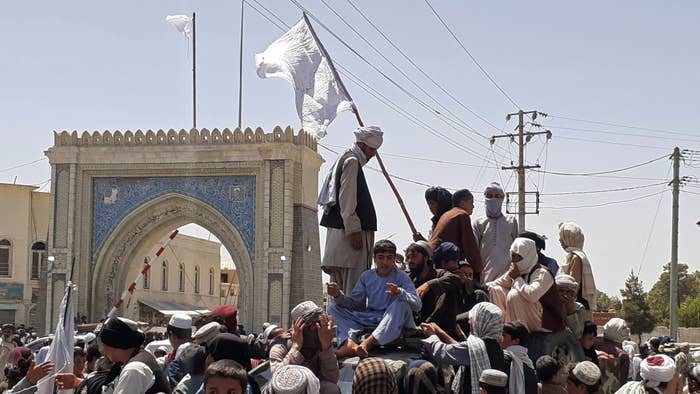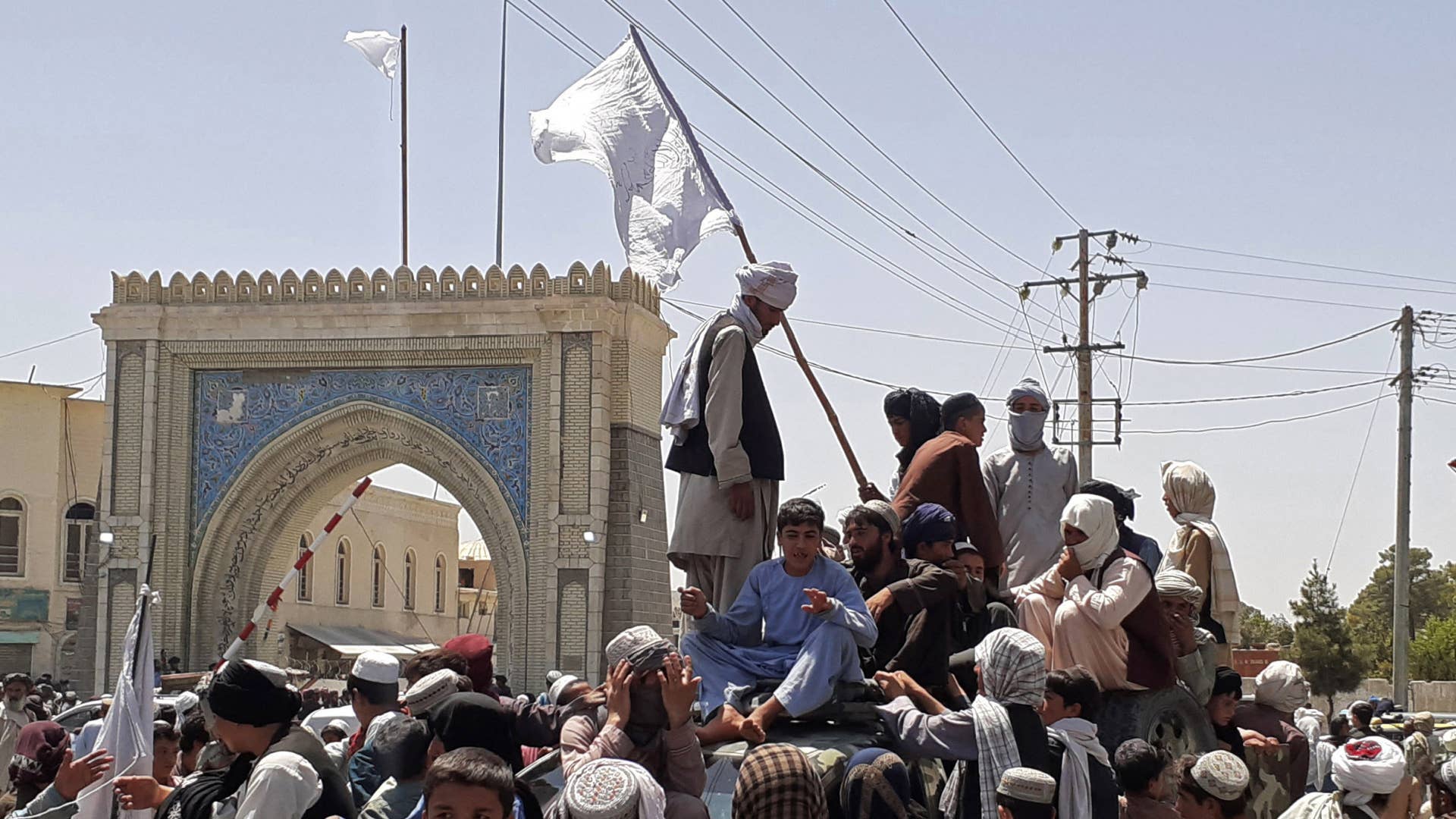
With word this month that the Taliban had managed to reach Afghanistan’s capital city, mere weeks before the U.S. was projected to wrap up its troop withdrawal process, U.S. officials are said to be surprised at the rate with which the region’s government has fallen.
The history, however, runs deep.
As attention turns to President Biden, who in April announced he would “not pass this responsibility on” to a fifth president after four consecutive administrations, we’ve put together a guide on the current situation in Afghanistan and how it connects to the United States’ extended history of over-militarization.
Recent reports have focused on those in Afghanistan who were fleeing the region amid a Taliban power-seize, with some critics of the withdrawal strategy stating such results were inevitable, though—as argued by others—swiftly seen on a wide scale much quicker than anticipated.
The Council on Foreign Relations, a nonprofit focused on international affairs, explains that the Taliban—a fundamentalist Islamic group—was in power in Afghanistan from 1996 until the major influx of U.S. troops in 2001. The following year, a transitional government was established.
The Afghanistan government, the Taliban, and—despite withdrawal plans—U.S. troops are all currently involved in the still-escalating fallout. Also expressing their thoughts on the matter are previously involved figures, including former president Donald Trump.
In April, President Biden—then just three months into his presidency—affirmed his administration’s commitment to a diplomatic agreement they had inherited under which U.S. troops would be out of Afghanistan this year.
“We will not conduct a hasty rush to the exit,” Biden said at the time. “We’ll do it—we’ll do it responsibly, deliberately, and safely. And we will do it in full coordination with our allies and partners, who now have more forces in Afghanistan than we do. And the Taliban should know that if they attack us as we draw down, we will defend ourselves and our partners with all the tools at our disposal.”
Biden, expectedly, also mentioned the killing of al-Qaeda leader Osama bin Laden, which happened in 2011 during his time as VP under the Obama administration. He conceded, however, that still having such a U.S. military presence in the region so many years later “makes little sense.”
Though likely unintentional, this could be interpreted as a reference to the longstanding criticisms of the U.S.’ actions in Afghanistan at large, dating back to the immediately post-9/11 Bush era and the subsequent Iraq travesties.
Not long after the withdrawal of NATO troops began in May, the Taliban is reported to have kickstarted efforts against the Afghanistan government, ultimately taking the capital city of Kabul and besting predictions from experts as to the likely rate of such collapses amid exiting military forces.
Among the more dramatic images coming out of Afghanistan by mid-August was footage from the Hamid Karzai International Airport showing a crowd of people desperately attempting to board a U.S. plane as it prepared to take off. There were also reports that several people had fallen from the craft after takeoff.
Thousands of people ultimately rushed the tarmac of the airport, per the Associated Press, with senior U.S. military officials saying at least seven people were dead as of Monday.
Images from the evacuations include a U.S. Air Force C-17 cargo jet departing from Kabul packed with hundreds of people. The plane is meant to carry only 134 soldiers and their equipment but can carry a load of 171,000 pounds, according to Forbes.
There were around 640 Afghans on the plane, which went to Qatar, Defense One reported.
“Ok, how many people are on your jet? 800 people on your jet? Holy cow,” a flight controller can be heard saying. “Good job getting off the ground!”
On Sunday, Afghan President Ashraf Ghani fled the country, saying in a Facebook-shared statement that he “thought it was best” to leave to prevent additional violence. Doing so, he added, marked a “hard choice.” The Taliban has taken control of Kabul, placing themselves in the presidential palace without much pushback.
In short, the U.S.-supported government has now fallen, leaving many to wonder what’s next while simultaneously pointing fingers and making peculiar efforts at revisionist history.
Tuesday, the Taliban said it would “respect women’s rights” albeit within Islamic law. Historically, this was not the case in years past, a facet of this complicated issue that’s received renewed attention and skepticism. Spokesperson Zabihullah Mujahid, per AP, also said the Taliban wanted private media outlets to “remain independent.” Journalists, the report further quoted, shouldn’t “work against national values.”
In a statement dated Aug. 14, Biden said he had been in “close contact” with security officials regarding how best to protect the U.S.’ “interests and values” as the military mission in Afghanistan draws to a close. Biden explained that he had given approval for the deployment of thousands of U.S. troops to, in his words, “make sure we can have an orderly and safe drawdown” of U.S. personnel and allies.
“When I came to office, I inherited a deal cut by my predecessor—which he invited the Taliban to discuss at Camp David on the eve of 9/11 of 2019—that left the Taliban in the strongest position militarily since 2001 and imposed a May 1, 2021 deadline on U.S. Forces,” Biden pointed out, adding that Trump had drawn U.S. Armed Forces down to a “bare minimum” of 2,500 just before leaving office.
On Monday (Aug. 16), Biden addressed the nation on the latest developments coming out of Afghanistan, with the president standing “squarely behind my decision” to withdraw U.S. troops.
“After 20 years, I’ve learned the hard way that there was never a good time to withdraw U.S. forces,” he said. “That’s why we’re still there, we were clear-eyed about the risks, we planned for every contingency. But I always promised the American people I would be straight with you.”
He added, “I know my decision will be criticized. But I would rather take all that criticism than pass this decision on to another president of the United States, yet another one, a fifth one.” Biden also admitted, “The truth is, this did unfold more quickly than we had anticipated” in regards to the collapse of the Afghanistan government.
You can watch Biden’s full remarks, which begin at the 46:29 mark in the video below.
Meanwhile, the Pentagon confirmed that U.S. forces had killed two people they described as “armed.”



